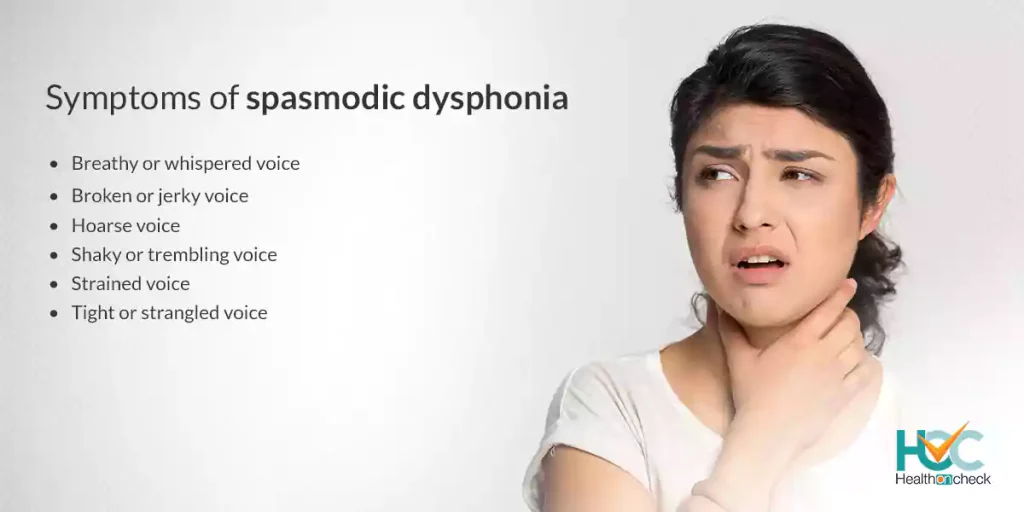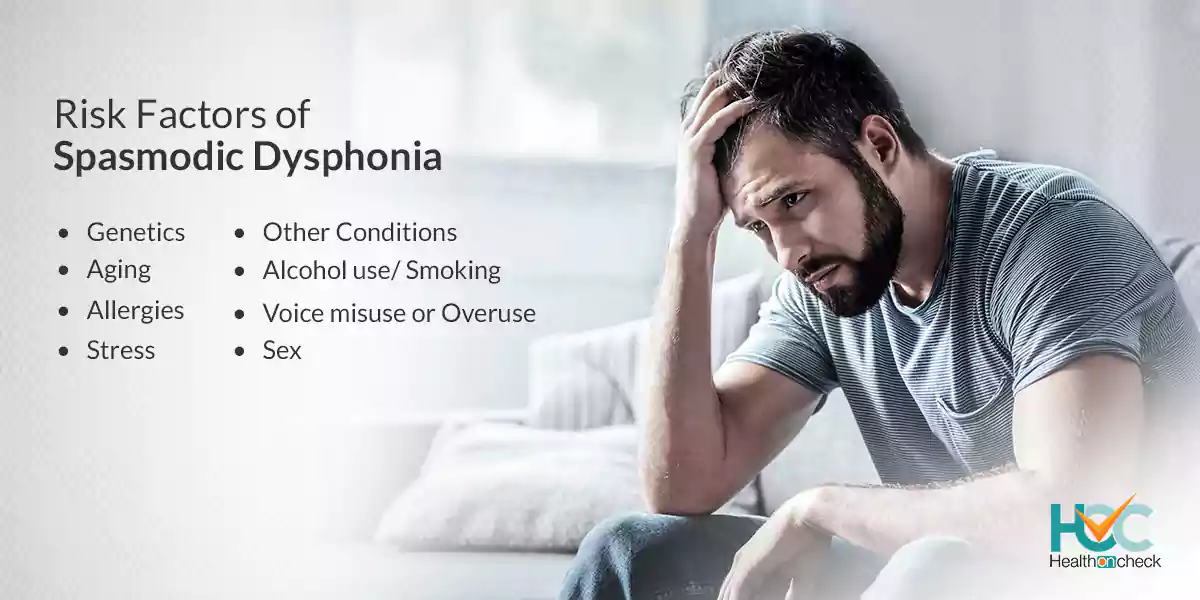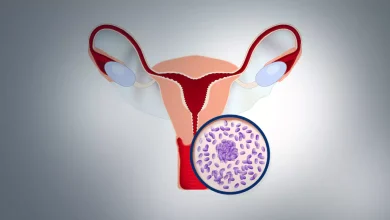All about Spasmodic Dysphonia

What is Spasmodic Dysphonia?
Spasmodic Dysphonia also known as dysphonia spastica is a neurological voice related disorder that adversely affects the voice muscles in the larynx, or voice box, resulting in “spasm.” These spasms make the voice to be strained and interrupted thus affecting the voice quality which makes the person nearly unable to speak. The onset of this disorder is mostly gradual and it is a lifelong condition. This disorder can cause the voice to break up or to have a tight, strained, breathy, strangled, or whispery quality that sometimes sounds like a vocal tremor. Spasmodic dysphonia causes breaks or interruptions in the voice, frequently after every few sentences, making a person difficult to understand.
What are the Types of Spasmodic Dysphonia?
Spasmodic dysphonia is categorized into three types including:
Adductor Spasmodic Dysphonia:It is the most common type of spasmodic dysphonia that causes sudden instinctive spasms making the vocal cords rigid and slam closed. The spasms affect the vibration of the vocal cords and sound. Stress can worsen the spasms. Speech sounds are weary and full of effort. Spasms, usually, do not occur while whispering, laughing, singing, speaking at a high pitch, or speaking while breathing in.
Abductor Spasmodic Dysphonia: It is a less common type of spasmodic dysphonia and creates unexpected involuntary spasms that cause the vocal cords to open. Vibration can’t occur when cords are open so making sound is hard. Also, the open position allows the air to escape while talking and the voice weak, quiet, and breathy. Spasms do not occur while laughing or singing.
Mixed Spasmodic Dysphonia: This is very rare spasmodic dysphonia with a mix of symptoms of both types of dysphonia.
What are the Symptoms of spasmodic dysphonia?
Symptoms of spasmodic dysphonia vary and depend on whether the spasms are making the vocal cords close or open. Speech that is strained or difficult, weak, quiet, or breathy may be because of spasmodic dysphonia.
People with spasmodic dysphonia have voices with the following symptoms:

- Breathy or whispered voice.
- Broken or jerky voice.
- Hoarse voice.
- Shaky or trembling voice.
- Strained voice.
- Tight or strangled voice.
What are the Causes of Spasmodic Dysphonia?
Researchers yet do not know the exact cause of spasmodic dysphonia but a central nervous system disorder is believed to cause most cases. It may occur along with other movement disorders. According to researchers, it may be caused by a problem in the basal ganglia of the brain which is the area that aids to coordinate muscle movement. Spasmodic dysphonia can also be inherited. It may begin post cold or the flu, injury to the voice box, a long period of voice use, or some kind of tension in your brain.
Also if you have spasmodic dysphonia, the muscles in the larynx (voice box) can spasm either open or closed when you are trying to talk. The unexpected, impulsive spasms can cause the vocal cords (folds) to move in strange ways, thus affecting your voice. The spasms that make the vocal changes may come and go without a clear reason. There’s been a connection between stress and augmented spasms.
What are the Risk Factors of Spasmodic Dysphonia?
Spasmodic dysphonia (SD) is a disabling voice disorder with no known cure but its symptoms can ease with treatment. The exact cause of spasmodic dysphonia is still not clear but genetics and stress may play a crucial role in its occurrence. The risk factors of spasmodic dysphonia may include:

– Sex
Women are more likely to develop spasmodic dysphonia as compared to men
– Genetics
If you have a family history of spasmodic dysphonia then you have an increased risk of developing spasmodic dysphonia as compared to people with no family history of spasmodic dysphonia. Other genetic factors, such as autosomal dominant traits with reduced penetrance, or polygenic inheritance may also be a risk factor.
– Other Conditions
If you have other health conditions such as head, neck, trunk, or limb trauma, throat dehydration, thyroid problems, ocular diseases, and throat cancer, then you are at risk of developing spasmodic dysphonia.
– Stress
Social anxiety and phobias have also been linked to the onset of spasmodic dysphonia.
– Aging
With age the risk of developing spasmodic dysphonia and other voice disorders increases
-Alcohol use/ Smoking
Researchers have linked drinking alcohol and smoking with various voice disorders including spasmodic dysphonia.
– Allergies
Various types of allergies also increase the risk of developing spasmodic dysphonia.
– Voice misuse or Overuse
What are the Complications of Spasmodic Dysphonia?
Spasmodic dysphonia is a voice-related condition and can cause problems ranging from trouble saying a word or two to being not able to talk at all. While there may be problems in the quality of your voice in mild symptoms but ins severe symptoms you may even lose the ability to speak and the inability to use your voice leaves you feeling inferior and extremely embarrassed.
How is spasmodic dysphonia diagnosed?
Diagnosis of spasmodic dysphonia is not simple because the symptoms are sometimes similar to other various voice disorders. Diagnosis generally includes an examination by a team of doctors, including:
An otolaryngologist, a doctor who is specialized in disorders of the ear, nose, throat, head, and neck. The otolaryngologist carries out a test known as fiberoptic nasolaryngoscopy—to evaluate vocal fold anatomy and movements during speech and other activities of the larynx. In this test, he will put a small lighted tube through your nose and into the back of the throat. This test helps to diagnose spasmodic dysphonia.
A speech-language pathologist is a health professional specialized in evaluating and treating voice, speech, and language problems. The speech-language pathologist will examine voice symptoms to diagnose the condition.
A neurologist, a doctor who is specialized in disorders related to the nervous system will look for symptoms in the brain of dystonia and other movement disorders.
What treatment is available for spasmodic dysphonia?
There is currently no cure for spasmodic dysphonia, but treatment can help reduce its symptoms. The most common treatment involves injecting a very less amount of botulinum toxin straight into the affected muscles of the larynx. Clostridium botulinum, the same bacterium found in improperly canned foods and honey produces botulinum toxin. botulinum toxin weakens muscles by blocking the nerve impulse to the muscle. Botulinum toxin injections mostly improve the voice for three to four months, after which voice symptoms reoccur. Reinjections are required to keep a good speaking voice. This treatment has some side effects including a temporarily weak, breathy voice along with occasional swallowing problems, but these problems gets improve after some days to weeks. Botulinum toxin injections are more useful with adductor spasmodic dysphonia than with abductor spasmodic dysphonia.
Behavioral therapy (voice therapy) is also used to treat the symptoms in mild cases. Voice therapy is effective with botulinum toxin injections to decrease voice strain. Psychological counseling may help in some cases as it helps the patients to accept and live with their voice problems.
Augmentative and assistive devices are useful to treat patients with spasmodic dysphonia and help them to communicate more easily. Some devices can help make a person’s voice amplified, whether in person or over the phone. Computer software and tablet or smartphone apps are useful to translate text into synthetic speech.
If these treatment methods fail then surgery may be carried out on the larynx. Various surgical approaches are used for treating spasmodic dysphonia. Certain surgical treatments may result in overall positive outcomes, but the results can vary for the patients.
Living with spasmodic dysphonia
Spasmodic dysphonia continues throughout a person’s life. The symptoms can be controlled through treatments but it does reoccur after some time so treatment is a lifelong process. This condition can potentially cause immense suffering for patients, both physically and mentally. Those who suffer from SD are forced to ‘think’ and make a huge amount of effort with their speech daily and that is why it’s important to get support from close friends and family members so that people suffering from it can at least try to lead a normal life.
Whom to Consult?
If you notice symptoms of spasmodic dysphonia then it’s important to meet your doctor. Your doctor after listening to your symptoms will refer you to a speech specialist who will diagnose your problem, the type, and severity and will start treatment accordingly.




